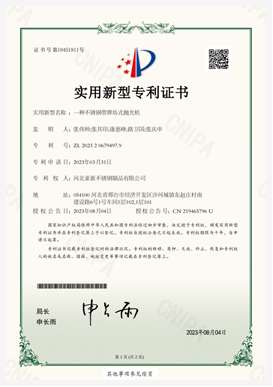Efficient Harvesting Solutions for Modern Agriculture Practices and Technology Advancement
The Trailed Harvester Revolutionizing Agriculture
The agricultural landscape has undergone significant transformations over the past century, with advancements in technology playing a central role in this evolution. Among the myriad innovations, the trailed harvester stands out as a remarkable invention that has revolutionized the way crops are harvested. This versatile piece of equipment has enhanced efficiency, productivity, and sustainability in agriculture, marking a pivotal shift in farming practices.
Understanding the Trailed Harvester
A trailed harvester is an agricultural machine specifically designed to harvest various crops, including grains, legumes, and even some fruits. Unlike self-propelled harvesters, which are equipped with their own engines, trailed harvesters are towed behind a tractor or another vehicle. This design offers several advantages, including increased flexibility, ease of transportation, and reduced operational costs.
The operation of a trailed harvester involves multiple stages, including cutting, threshing, and collecting the harvested material. The cutting mechanism employs sharp blades to sever the crop from its base, while the threshing component separates the grain from the chaff. Finally, the collected grain is stored in a hopper, ready for further processing or transportation.
Advantages of Trailed Harvesters
The adoption of trailed harvesters has brought about numerous benefits for farmers around the world. One of the most significant advantages is improved efficiency. Traditional harvesting methods, including manual labor, are not only time-consuming but also labor-intensive. Trailed harvesters automate these processes, allowing farmers to cover larger areas in less time. This efficiency is particularly crucial during the harvest season when timely harvesting can significantly impact yield and quality.
Moreover, trailed harvesters are often more cost-effective than their self-propelled counterparts. Since they utilize the power of an existing tractor, farmers can invest in a trailed harvester without needing to purchase a new, expensive machine. This makes it an accessible option for small and medium-sized farms, empowering a broader range of agricultural producers.
Another notable advantage of trailed harvesters is their adaptability. They can easily be adjusted for use in various field conditions and crop types. Farmers can switch from harvesting wheat to soybeans without needing to invest in new equipment, making trailed harvesters a flexible and practical choice for diverse agricultural operations.
trailed harvester

Impact on Sustainability
In an age where sustainability is paramount, trailed harvesters contribute to more environmentally friendly farming practices. By improving harvesting efficiency, these machines help reduce fuel consumption and greenhouse gas emissions associated with agricultural activities. Additionally, the precision of modern trailed harvesters minimizes crop damage and ensures that farmers can maximize their yields, reducing the need for excessive land clearing and promoting biodiversity.
The integration of technology into trailed harvesters further enhances their sustainability. Many modern models are equipped with advanced features such as GPS navigation, yield monitoring, and data collection systems. These technologies allow farmers to assess their fields more accurately, make informed decisions about crop rotation, and implement precision agriculture practices that optimize resource use. As a result, trailed harvesters not only boost productivity but also foster responsible stewardship of the land.
Challenges and Future Developments
Despite their numerous benefits, trailed harvesters are not without challenges. Farmers must invest time and resources into maintaining these machines to ensure optimal performance. Additionally, the initial costs, although lower than self-propelled harvesters, can still be a barrier for some small-scale farmers.
Looking ahead, the future of trailed harvesters seems promising with the ongoing advancements in agricultural technology. Innovations such as automation, artificial intelligence, and improved materials are likely to enhance the capabilities of trailed harvesters, making them even more efficient and reliable. Furthermore, as the global population continues to grow, the demand for food will increase, driving the need for more effective agricultural practices.
Conclusion
The trailed harvester represents a significant advancement in agricultural technology, providing farmers with an efficient, adaptable, and sustainable solution for harvesting crops. As the agricultural industry continues to evolve, the role of trailed harvesters will undoubtedly remain crucial. By embracing such innovations, farmers can meet the challenges of modern agriculture, ensuring food security while promoting sustainable practices. As we look to the future, the trailed harvester stands as a testament to the ingenuity of human innovation in the quest for a more productive and sustainable agricultural sector.
Latest news
-
When to Upgrade Your Old Forage HarvesterNewsJun.05,2025
-
One Forage Harvester for All Your NeedsNewsJun.05,2025
-
Mastering the Grass Reaper MachineNewsJun.05,2025
-
How Small Farms Make Full Use of Wheat ReaperNewsJun.05,2025
-
Harvesting Wheat the Easy Way: Use a Mini Tractor ReaperNewsJun.05,2025
-
Growing Demand for the Mini Tractor Reaper in AsiaNewsJun.05,2025







